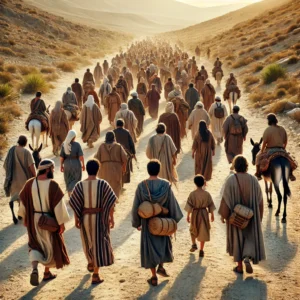 The Gospels tell us the names of the twelve disciples of Jesus and, because we know who they were, we can follow some of them through the pages of Scripture to learn more about their activities after the ascension of Jesus. The Gospels also reveal that these twelve men were not the only disciples that followed Jesus. Luke 10:1 records this piece of history:
The Gospels tell us the names of the twelve disciples of Jesus and, because we know who they were, we can follow some of them through the pages of Scripture to learn more about their activities after the ascension of Jesus. The Gospels also reveal that these twelve men were not the only disciples that followed Jesus. Luke 10:1 records this piece of history:
“After this the Lord appointed seventy others and sent them on ahead of him in pairs to every town and place where he himself intended to go.” – Luke 10:1
Perhaps you have wondered who they were or what they did in history. Maybe you wondered who Mark and Luke were and why they wrote two of the Gospels. What about the rest of this group? Now, understand this has nothing to do with theology and is strictly about history. We can learn a lot about the history of the early church in these types of studies. For example, we can follow Paul through the book of Acts to trace his missionary journeys and connect those trips with the different letters he wrote. This helps to narrow down when the different letters were written and the role some of the recipients played in spreading the gospel message. Historical accounts outside of the Bible can also help us piece together these types of puzzles.
Historical documents exist that provide us with the names of these disciples. As a side note, some Bible versions translate the number in this passage as 70 and others as 72. This is because it is rendered differently in some original Greek manuscripts, possibly resulting from a copyist’s error. The historical documents that provide us with their names contain the same variations so I will use 72 for this article, but historians and theologians are still split on which to use in the Luke passage. Of course, the challenge with these lists is that none of them are authoritative. So, I put them in the category of interesting.
There are several lists attributed to different people. One from Irenaeus, who lived in the second century, another from Hippolytus, who lived in the third century, and one from Solomon of Basra who lived in the 13th century. None of these lists are in entire agreement, but they all have about 50% of the names in common. The first two are almost certainly pseudepigrapha as they were likely written much later. But the most interesting, at least to me, is the one from Demetrius of Rostov in the 17th century because his list includes references to biblical texts.
We know from Acts 2:23 that Joseph (also known as Barsabbas and Justus) and Matthias had been with the disciples and Jesus since the baptism performed by John, so it is fair to say they were part of this 72. All the available lists contain both of these names. Demetrius also includes Cleopas (Luke 24:18), the Barnabas who traveled with Paul, Ananias who prayed for Paul after Damascus (Acts 9:10-18), Stephen who was stoned in Acts 7, and many more familiar names from Scripture. You can read his complete list here. And, yes, Luke and Mark are also on his list. This should be interesting to anyone studying the Bible because it gives us more context to the lives of those we see mentioned in Scripture. It is easy to revere the original twelve (minus Judas) and see the rest as secondary figures, but many of these others went on to be bishops over various regions while the early church was in its formative years.
Does it add to our theological understanding of Scripture? No, but knowing that God used others, beside the original twelve, throughout the early days of church history to spread the gospel message should be encouraging to every believer that they too can be used by God in amazing ways. Scripture is always our primary text, but secondary texts can add some clarity, and even with a trivial topic such as this one, it can be fun to dig into the history of who these people may have been.